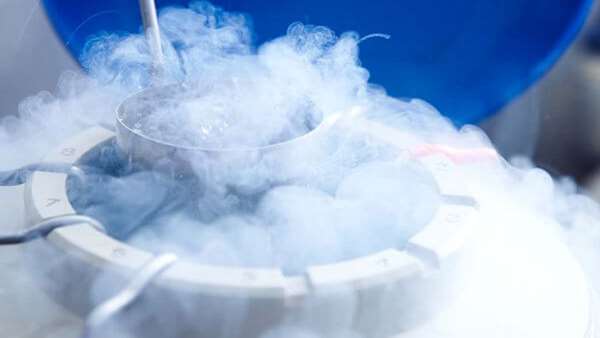A new record in the number of years an embryo was cryopreserved before developing in a born baby pushes forward the known temporal limit for biological material cryopreservation.
On October 31th, Lydia and Timothy Ridgeway were born from a woman who “adopted” twin embryos donated to the National Embryo Donation Center in Knoxville (Tennessee) and frozen by an anonymous couple in the spring of 1992; that is, more than 30 years ago. With their birth, Lydia and Timothy broke the cryopreservation record established by Molly Gibson, who was born in 2020 from an embryo that was cryopreserved nearly 28 years earlier. What is more, Lydia and Timothy’s birth demonstrates that it is possible to cryopreserve biological material, including stem cells, for as long as almost 30 years without affecting its quality.
What is cryopreservation?
Cryopreservation involves the storage of biological material at ultra-low temperatures (- 196 °C) that can be reached by the use of liquid nitrogen. Among biological material that is
usually cryopreserved are gametes (oocytes and sperm), embryos from in vitro fertilization (IVF), and stem cells from several tissues, such as hematopoietic stem cells from umbilical cord blood, and mesenchymal stem cells from adipose tissue.
So, cryopreservation can be a central component of fertility preservation. For example, it allows women and men undergoing anticancer treatment to preserve for future use their gametes, which could otherwise be damaged by treatments such as radiotherapy. It also enables young women to cryopreserve their high-quality oocytes to postpone their pregnancy for socioeconomic reasons. And, after IVF, it enables preserving extra embryos to be eventually used in following embryo transfer.
However, people can decide to freeze other biological material to be used for purposes other than fertility preservation or medically assisted procreation. For example, stem cells from umbilical cord blood can be stored for future use in blood-lymphatic and other disorders, and cryopreserved adipose tissue-derived stem cells (ADSCs) have a wide range of different clinical application, from Regenerative Medicine (such as regenerative orthopedics; early menopause, erectile dysfunction, and xerostomia treatment; and anti-aging intravenous therapy) to Body Shaping (such as face reshaping; breast augmentation; buttock enhancement; and penis enlargement).
How long can biological material be cryopreserved?
Cryopreservation costs money and resources. In particular, people who store their biological material at private facilities, such as Bioscience’s ones, have to pay for cryopreservation. That is why Bioscience fixed a temporal limit to cryopreservation based on scientific evidence of the possibility to successfully use the cryopreserved material after this temporal limit. The concern is that using stem cells, gametes, or embryos cryopreserved for too long could compromise the success of the treatments or the pregnancy.
In fact, Lydia and Timothy’s parents chose to adopt their embryos exactly because they knew that usually nobody wants to adopt such old embryos, fearing the possibility that they are too old for a successful pregnancy. That fear adds to the known 80% survival rate of thawed embryos, and the known 25% to 40% chance of live birth following frozen embryo transfer. But Lydia and Timothy’s birth provide evidence of 30-year-old embryo’s vitality and quality, extending to at least 30 years the limit for cryopreservation of biological material; that is, not only embryos, but also cells such as gametes and stem cells.
The age that matters
According to several experts, biological material can be
cryopreserved pretty much indefinitely, because the very low storage temperature essentially blocks all the biological processes. That means that cryopreserved cells or embryos do not age. On the contrary, the age of the donor at the time of the cryopreservation could make the difference. For example, oocytes from young women have a higher probability of giving rise to embryos that will survive.
So, even if it is never too late to cryopreserve your stem cells, do not hesitate to do it as early as you start thinking of it!




ارسال به دوستان